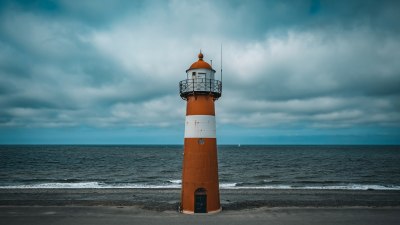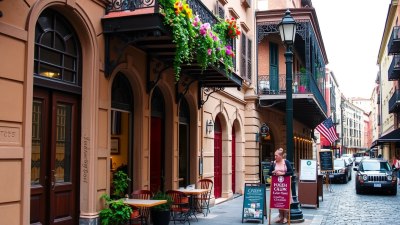Sailing to the Most Isolated Lighthouses in the World
Discover the world's most isolated lighthouses and the adventures of sailing to these remote beacons.

When people think about lighthouses, they often envision charming coastal settings, guiding mariners through treacherous waters. However, some lighthouses are located in places so remote that they seem to be worlds away from civilization. These isolated structures, often found on desolate islands or rugged coastlines, not only serve as navigational aids but also tell stories of resilience and human ingenuity. In this article, we will explore some of the most isolated lighthouses in the world, the challenges faced by those who maintain them, and the breathtaking journeys to reach them.
One of the most iconic among these beacons is the Eddystone Lighthouse, which stands proudly off the coast of Cornwall, England. The first Eddystone Lighthouse was built in 1698 and was constructed of stone to withstand the ferocity of the Atlantic storms. However, over the years, erosion and relentless waves led to the destruction of successive lighthouses. The current structure, completed in 1882, features a distinctive tapered design and is situated on a rocky outcrop 9 miles from shore. Visitors can only reach it by boat, and many sailing tours now offer adventurous trips to see this impressive lighthouse up close.
Traveling northwards, we arrive at the famed St. Paul Island Lighthouse located in the North Atlantic Ocean off the coast of Newfoundland, Canada. This lighthouse is particularly remarkable due to its sheer isolation. St. Paul Island itself is uninhabited, and the lighthouse is accessed only by private vessels or fishing boats. The original structure was built in 1856 and underwent several renovations to improve its functionality and resilience. The remote location means that only a few dozen lighthouses in the world are further from major urban centers. Its weather-worn beauty and the rugged landscape make it a coveted destination for intrepid sailors and lighthouse enthusiasts.
Further afield in the Southern Ocean, the Macquarie Island Lighthouse, belonging to Australia, is another testament to isolation. Built in 1880, the lighthouse has been key in safeguarding ships navigating the notoriously rough waters between New Zealand and Antarctica. The island was chosen for its strategic location but is known for unpredictable weather conditions that inexperienced sailors often underestimate. Reaching Macquarie Island typically requires a long journey from Hobart, with many vessels navigating through challenging waters. The journey presents unique challenges, such as heavy swells and frequent storms, making it essential for sailors to prepare meticulously before embarking.
Another captivating lighthouse is the Cape Horn Lighthouse, located on Hornos Island in Chile. It stands at the southernmost tip of South America and is surrounded by tumultuous seas and strong winds. Established in 1884, Cape Horn Lighthouse serves as a warning for vessels navigating the dangerous waters of the Drake Passage. The region is known for its ability to change weather patterns rapidly, resulting in a myriad of challenges for sailors. While it’s not possible to dock near the lighthouse itself, many expedition crews will sail close enough to marvel at this iconic structure amidst the stunning backdrop of untamed nature.
The Azores, a group of volcanic islands in the Atlantic Ocean, are home to the isolated Ponta do Pargo Lighthouse. This emblematic lighthouse stands at the highest point of the Madeira archipelago, overlooking breathtaking cliffs and fierce waves below. Built in 1922, it features a striking white exterior that starkly contrasts the blue of the surrounding ocean. Travelers wishing to reach this gorgeous site can sail boat tours that depart from various locations in the Azores, but often only during the warmer months when conditions permit. The Ponta do Pargo offers stunning panoramas of the Atlantic Ocean, drawing photographers and adventure seekers alike.
In the North Atlantic, you'll encounter the iconic commission of Sable Island Lighthouse, which sits alone amid a sandbank off the coast of Nova Scotia, Canada. Known as the 'Graveyard of Ships', Sable Island’s waters have claimed many maritime vessels over the years. The lighthouse was first constructed in 1850 and has had to withstand fierce storms and relentless sea conditions. Access to this isolated lighthouse generally requires a carefully planned sailing expedition as the waters around the island can be hazardous. Only a few companies provide guided tours to the region, where visitors can experience both the lighthouse and the unique ecosystem of the island, where wild horses roam freely.
Another lighthouse steeped in history is Bell Rock Lighthouse, located off the coast of Angus, Scotland. Considered one of the greatest engineering feats of its time, Bell Rock was built on a rock ledge, which is submerged during high tide. The project took several years to complete, with the lighthouse finally being lit in 1811. To reach Bell Rock Lighthouse, sailors must navigate through one of Scotland's most turbulent waters, making the journey both dangerous and awe-inspiring. Such an adventure often includes a careful inspection of tidal currents, and many are left speechless by the breathtaking sight of the lighthouse standing resiliently amidst the relentless waves.
The historic row of lighthouses on the Faroe Islands includes the isolated Mykines Lighthouse. Situated on the westernmost island of the archipelago, it offers a stunning view of the Atlantic Ocean. Built in 1909, Mykines Lighthouse is crucial for ensuring maritime safety but is only accessible through a scenic hike. Some tour operators offer boat trips to the island, but only during peak summer months when the weather is most favorable. The hike to the lighthouse features stunning landscapes and wildlife, including puffins, making it an adventure for nature lovers and photographers alike.
Another incredible location is the Anacapa Island Lighthouse, situated in the Channel Islands of California, United States. This lighthouse, established in 1932, lies atop a cliff overlooking the Pacific Ocean. It is among the more accessible lighthouses on this list, thanks to the boat trips available from the mainland. However, visitors still have to contend with unpredictable weather and logistics associated with traveling to a remote island. The tranquil waters around the lighthouse provide excellent opportunities for kayaking, while the stunning landscapes make for stunning photo opportunities for all visitors.
Finally, no journey through isolated lighthouses would be complete without mentioning the famous Lady Light House, found on the coast of Panama. This unique lighthouse not only serves as a beacon for mariners but is also almost entirely surrounded by mangroves and rich biodiversity. Built in the 1930s, it requires large boat tours to navigate the surrounding waters. Sailors often find the vibrant wildlife and natural surroundings captivating as they approach the lighthouse. It also represents a treasure trove of ecological wonders, making it a worthwhile stop for those interested in both history and nature.
In conclusion, sailing to some of the most isolated lighthouses in the world offers not just a glimpse into maritime history but an adventure of a lifetime. Each lighthouse tells its story, bearing witness to the harsh conditions faced by those who maintain and navigate these remote beacons. From the rugged cliffs of the Azores to the treacherous waters off the coast of Cape Horn, these lighthouses are a testament to human determination and the beauty of some of the Earth's most untouched locations. For those with a spirit of exploration and the thirst for adventure, these isolated lighthouses promise unforgettable journeys, breathtaking views, and the chance to connect deeply with the ocean and the wild.











